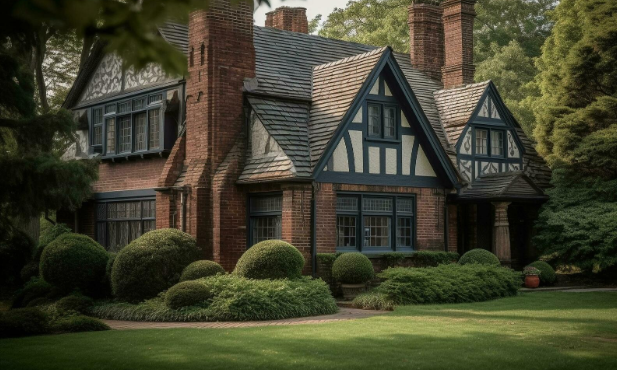Historic homes are not just old structures; they are living relics that offer a glimpse into the past. Preserving these architectural treasures is not only a way to honor our ancestors but also a means of safeguarding cultural heritage for future generations. In this article, we will delve into the world of historic homes, understanding their significance, the challenges faced in preservation, and how they can harmoniously coexist with modern living.
Understanding Historic Homes
Historic homes are residential buildings that hold historical, architectural, and cultural significance. These homes often boast unique designs, intricate craftsmanship, and stories of the people who once inhabited them. They serve as tangible connections to the past and provide a sense of continuity with our heritage.
1. Architectural Styles and Features
LSI Keyword: “Historic Home Architectural Styles”
Historic homes showcase a diverse range of architectural styles, including Victorian, Colonial, Gothic Revival, Craftsman, and Art Deco. Each style represents a specific era and reflects the prevailing design philosophies and preferences of that time.
2. Cultural Significance
LSI Keyword: “Cultural Importance of Historic Homes”
Historic homes are cultural landmarks that contribute to the identity of a community. They serve as symbols of the past and foster a sense of pride and belonging among residents. Preserving these homes helps maintain a shared cultural memory and a connection to the community’s roots.
The Importance of Historic Home Preservation
Preserving historic homes is essential for several reasons, as outlined below:
- Cultural Heritage: Historic homes offer insights into the lifestyles, values, and architectural achievements of past generations. They are valuable educational tools that promote an appreciation for history.
- Environmental Sustainability: Restoring and preserving existing structures is environmentally responsible, as it reduces the need for new construction and minimizes waste.
- Tourism and Economic Benefits: Historic homes attract tourists, boosting local economies through increased business activity and job creation in the hospitality sector.
Challenges in Historic Home Preservation
LSI Keyword: “Challenges in Preserving Historic Homes”
While the preservation of historic homes is vital, it comes with its own set of challenges:
- Aging Infrastructure: Many historic homes have aging infrastructure and may require extensive restoration work to ensure their structural integrity.
- Cost of Restoration: Preserving historic homes can be costly, often requiring skilled artisans and specialized materials to maintain authenticity.
- Zoning and Regulations: Historic homes may be subject to zoning laws and regulations that restrict modifications, making it challenging to meet modern living needs.
Techniques for Restoring Historic Homes
LSI Keyword: “Techniques for Restoring Historic Homes”
When restoring historic homes, it’s essential to strike a balance between preservation and modern comfort. Here are some techniques used in restoration:
1. Preservation and Conservation
LSI Keyword: “Historic Home Preservation Techniques”
Preservation involves retaining as much of the original material and features as possible. This may include repairing original windows, doors, and woodwork to maintain the home’s authenticity.
2. Replication
LSI Keyword: “Replication in Historic Home Restoration”
In cases where original features are irreparable, replication is employed to recreate elements that align with the home’s architectural style.
3. Modern Upgrades
LSI Keyword: “Modern Upgrades in Historic Homes”
Introducing modern upgrades, such as energy-efficient windows, HVAC systems, and insulation, ensures comfort without compromising the home’s historical character.
Blending History with Modern Living
LSI Keyword: “Blending Historic Homes with Modern Living”
Historic homes can successfully embrace modern living without compromising their authenticity. Here’s how:
- Open Floor Plans: Opening up interior spaces while respecting the original layout allows for a more contemporary living experience.
- Smart Technology Integration: Integrating smart technology discreetly allows homeowners to enjoy modern convenience while preserving the home’s original charm.
- Landscaping and Outdoor Living: Enhancing outdoor spaces can create a seamless transition between the historic home and the modern outdoor living area.
Historic Homes: FAQs
How do historic homes contribute to cultural heritage?
Answer: Historic homes offer insights into past lifestyles, values, and architectural achievements, fostering an appreciation for cultural heritage.
What are the challenges in preserving historic homes?
Answer: Challenges include aging infrastructure, high restoration costs, and compliance with zoning and regulations.
What techniques are used in restoring historic homes?
Answer: Techniques include preservation and conservation, replication of original features, and the integration of modern upgrades.
Can historic homes embrace modern living?
Answer: Yes, historic homes can successfully integrate modern living through open floor plans, smart technology, and outdoor living enhancements.
Conclusion
Preserving historic homes is a responsibility that ensures the continuity of our cultural heritage and connection to the past. These architectural gems offer not just a glimpse into history but also the potential for harmonious integration with modern living. By embracing restoration techniques that maintain authenticity while embracing modern comforts, we can cherish and celebrate historic homes as living testaments to the generations that came before us.











+ There are no comments
Add yours